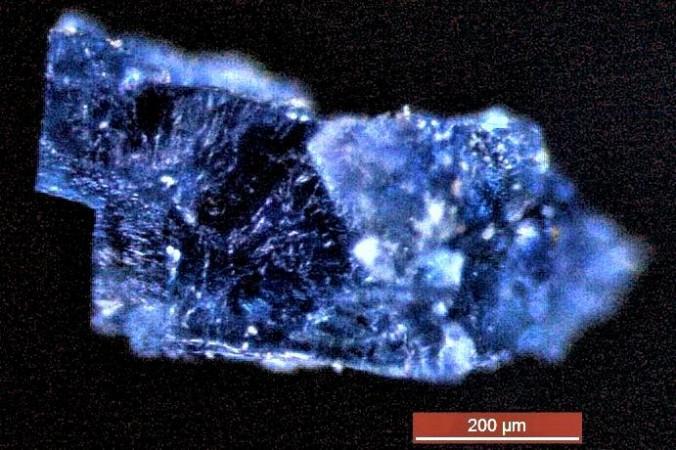
In 1998, two space rocks separately crashed to Earth after roaming around the solar system's asteroid belt for billions of years. The rocks were not the first of their kind to visit the planet, but they were the first meteorites found to contain ingredients essential for life.
A detailed study of the 4.5-billion-year-old meteorites, dubbed Monahans and Zag, revealed that the pair contained both liquid water and complex organic compounds like hydrocarbons and amino acids. The results were published in the journal Science Advances on Wednesday.
Further analysis of the chemical makeup within tiny blue and purple salt crystals sampled from the meteorites also revealed evidence of the rocks' probable parents, including Ceres, a brown dwarf planet that is the largest object in the asteroid belt, and the asteroid Hebe, a major source of meteorites that fall on Earth.
"This is really the first time we have found abundant organic matter also associated with liquid water that is really crucial to the origin of life and the origin of complex organic compounds in space," Queenie Chan, a planetary scientist at the Open University in Britain and the study's lead author, said in a statement.

According to Chan, the meteorites contain organic ingredients that can lead to the origin of life, but the recovered remnants don't necessarily provide any proof of life outside of Earth.
However, if life did exist in some form in the early solar system, these meteorites would have trapped life or biomolecules with their salt crystals that carried microscopic traces of water that might have existed when the solar system was still young -- about 4.5 billion years ago.
The two meteorites, which yielded the two-millimetre-sized salt crystals, were preserved at NASA's Johnson Space Center in Texas. One of the meteorites hit Earth near a children's basketball game in Texas in March 1998 while the other hit near Morocco in August in the same year.
But how did the complex suite of organic compounds landed on the space rocks? The scientists suspected that the crystals might have originally been seeded by ice- or water-spewing volcanic activity on Ceres. These materials then probably fell on passing asteroids, including Hebe.
"Everything leads to the conclusion that the origin of life is really possible elsewhere," Chan said. "There is a great range of organic compounds within these meteorites, including a very primitive type of organics that likely represent the early solar system's organic composition."









!['Had denied Housefull franchise as they wanted me to wear a bikini': Tia Bajpai on turning down bold scripts [Exclusive]](https://data1.ibtimes.co.in/en/full/806605/had-denied-housefull-franchise-they-wanted-me-wear-bikini-tia-bajpai-turning-down-bold.png?w=220&h=138)



